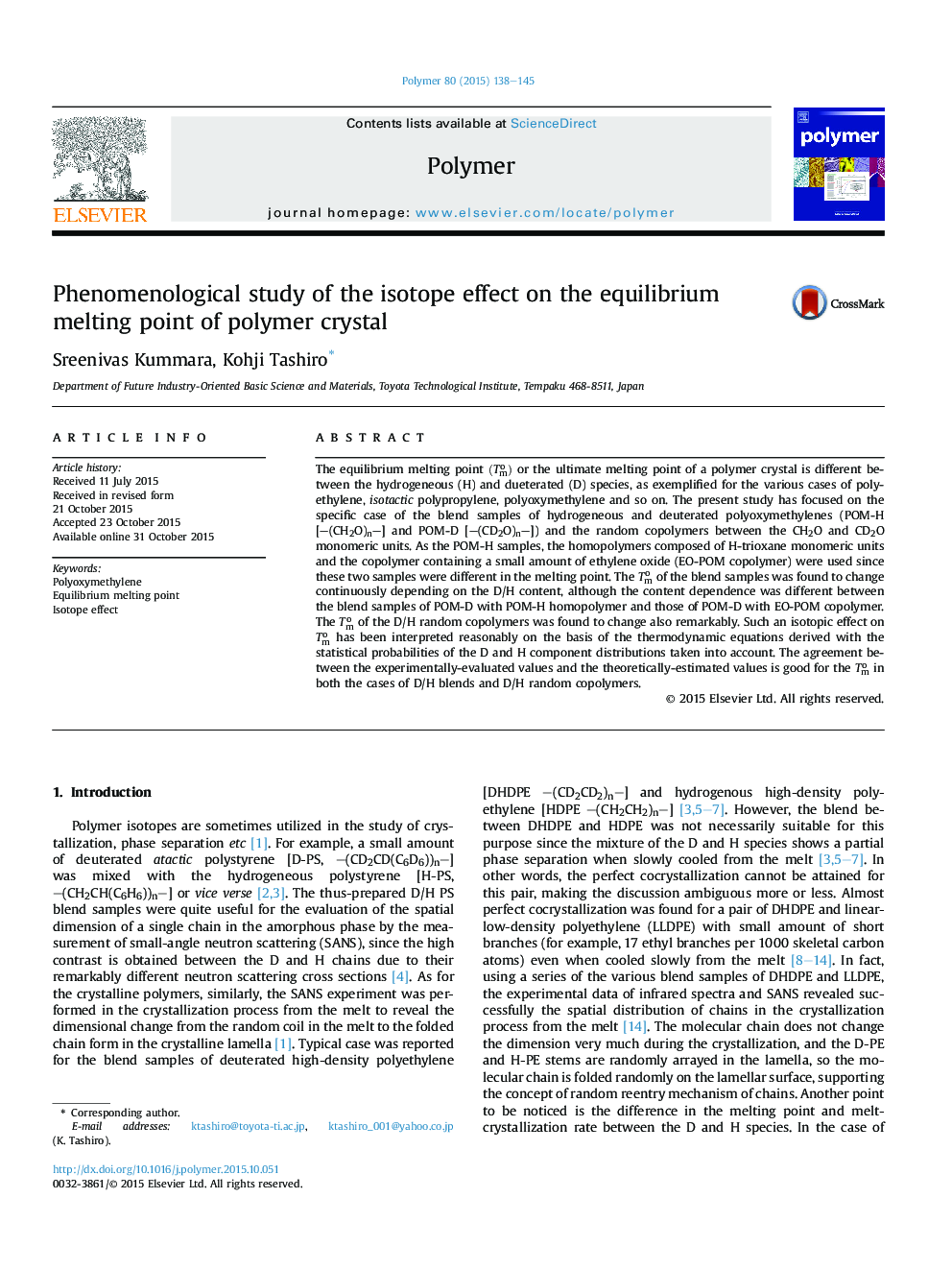| Article ID | Journal | Published Year | Pages | File Type |
|---|---|---|---|---|
| 5179623 | Polymer | 2015 | 8 Pages |
â¢Random copolymers of deuterated and hydrogeneous oxymethylene monomer units were synthesized for the first time.â¢The equilibrium melting temperature has been evaluated for both D/H blends and copolymers of POM experimentally.â¢The phenomenological theory succeeded to reproduce these experimental data well.
The equilibrium melting point (Tmo) or the ultimate melting point of a polymer crystal is different between the hydrogeneous (H) and dueterated (D) species, as exemplified for the various cases of polyethylene, isotactic polypropylene, polyoxymethylene and so on. The present study has focused on the specific case of the blend samples of hydrogeneous and deuterated polyoxymethylenes (POM-H [-(CH2O)n-] and POM-D [-(CD2O)n-]) and the random copolymers between the CH2O and CD2O monomeric units. As the POM-H samples, the homopolymers composed of H-trioxane monomeric units and the copolymer containing a small amount of ethylene oxide (EO-POM copolymer) were used since these two samples were different in the melting point. The Tmo of the blend samples was found to change continuously depending on the D/H content, although the content dependence was different between the blend samples of POM-D with POM-H homopolymer and those of POM-D with EO-POM copolymer. The Tmo of the D/H random copolymers was found to change also remarkably. Such an isotopic effect on Tmo has been interpreted reasonably on the basis of the thermodynamic equations derived with the statistical probabilities of the D and H component distributions taken into account. The agreement between the experimentally-evaluated values and the theoretically-estimated values is good for the Tmo in both the cases of D/H blends and D/H random copolymers.
Graphical abstractDownload full-size image
